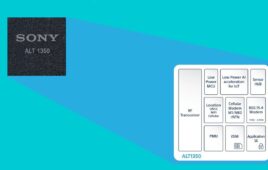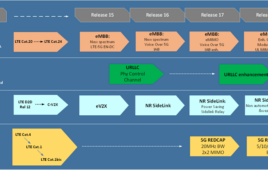Ask your friends if they know what Linux is and you might get a blank stare. Most consumers haven’t got a clue – but launch into a discussion about the latest mobile devices and coolest user experiences – and now you’re talking. Quietly, behind the scenes, Linux is influencing the mobile market in many ways. There’s a huge mash-up phenomenon going on and Open Source licenses and open APIs are enabling the easy creation of these popular Web application hybrids. Companies looking to differentiate on user interfaces and personalized content features are turning to Linux and Open Source. The incredible flexibility of the Linux operating system is expediting the variety and speed at which smartphones, media phones, mobile Internet devices, netbooks and set-top boxes are being created and driving costs down.
When device manufacturers first started considering using Linux in their up-and-coming products around a decade ago, the first thing that must have crossed their minds was the savings that using a free and open platform could generate. Few can argue against the cost-effectiveness of Linux-based devices, but for device  manufacturers, operators and service providers, the flexibility of the operating system has become the No. 1 reason for choosing Linux as the basis of a new device. For consumers, Linux means that services can be tailored and personalized to match their needs in new and exciting ways that are extremely hard to achieve with closed operating systems.
manufacturers, operators and service providers, the flexibility of the operating system has become the No. 1 reason for choosing Linux as the basis of a new device. For consumers, Linux means that services can be tailored and personalized to match their needs in new and exciting ways that are extremely hard to achieve with closed operating systems.
As the technological base is the same in all Linux-based devices, there is healthy competition among industry players who have to work harder to provide compelling devices and amazing user experiences to differentiate themselves from their competitors. Industry players LiMo and Android, for example, use Linux differently to create a variety of mobile devices. While LiMo provides middleware – on top of which device manufacturers can create their own user interface layer – Android is a full software stack with a customizable user interface layer. Despite these different approaches, the bottom line is the ability to differentiate at the user experience level. For consumers, this is a win-win as they can look forward to better and more personal user experiences on and across all their mobile devices.
One way for operators and service providers to stand out and provide unique and differentiating offers is to create their own ecosystems around Linux-based devices and services. As the future of mobile Linux is tightly tied to the future of the wireless Internet, providing consumers with services that are seamlessly integrated to online resources allows for completely new kinds of mobile Internet experiences. We have already seen in mobile devices that Internet applications, like browser or RSS readers, are no longer the only applications accessing the Internet. Open APIs provided by various Open Source community projects are being used to enrich and enhance various mobile applications. For example, some of the current generation media players already fetch more information about the song that is playing from online sources to provide users with information such as the artist’s biography or song’s lyrics.
By utilizing mobile Linux, operators and service providers can integrate their own existing services, or create new services, around the concept of “always on and always-connected” mobile devices. These services can be bundled by the operator or service providers as part of the service packages. Using the media player example again, service providers can integrate their existing music stores as a natural part of the media player. An example of a completely new service could be a content sharing service that allows users to instantly access all the content from all of their Internet connected devices when using devices and services that are within the same operator or service provider ecosystem.
These examples are just the tip of the iceberg when it comes to the benefits mobile Linux brings to consumers, operators and service providers alike. They touch upon the flexibility and customization capabilities of the Linux platform and depict how it can be utilized in developing and delivering entirely new kinds of services.
Customization and personalization of a mobile device is more than just adding an operator’s individual custom applications to an otherwise closed device. Instead, the integration to the service provider’s or operator’s services should be done at a much deeper level, so that the online services are inseparably part of the everyday usage of the device and its user experience. And the customization should not be limited to just one device offered by the operator or service provider. Mobile Linux enables operators and service providers to provide cross-device interoperability so that the same services work together seamlessly across devices. As a hardware-platform independent technology, this is something that Open Source and Linux can bring to the mobile market and beyond.
Mobile Linux has proven to be a noteworthy challenger to closed operating systems and we are already starting to see device manufacturers, operators and service providers capitalize on the flexibility of Open Source in order to bring consumers the next generation of amazingly rich, highly personalized devices and cross-device services.
Teemu Pohjola is a user experience specialist for Movial.




